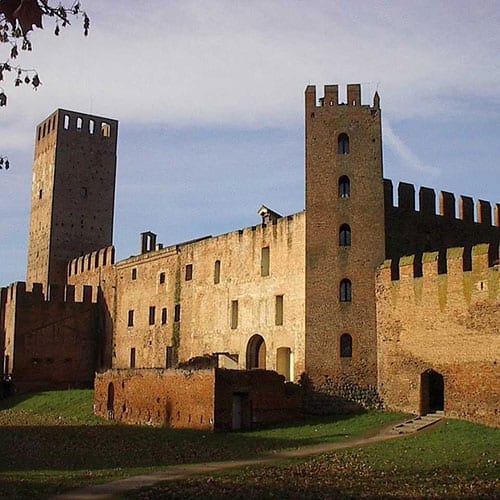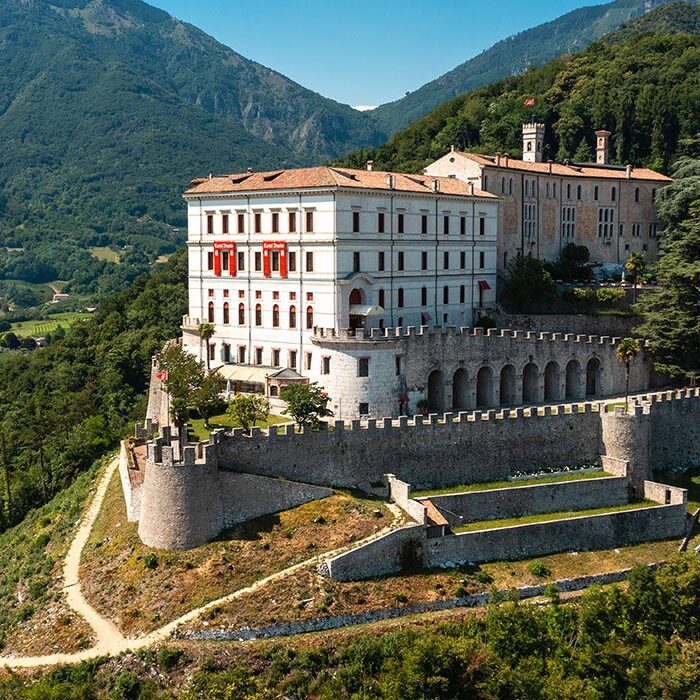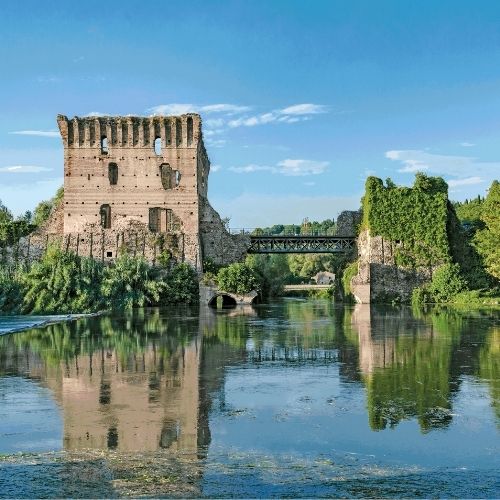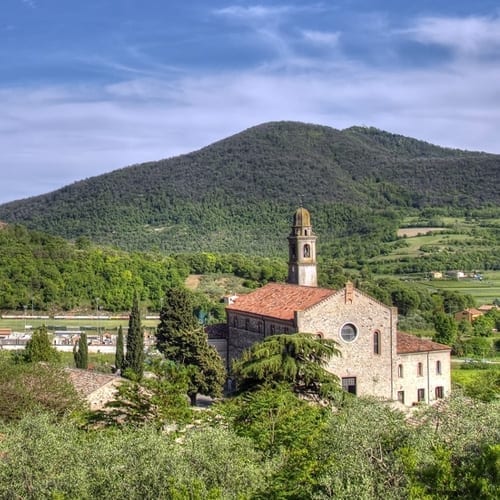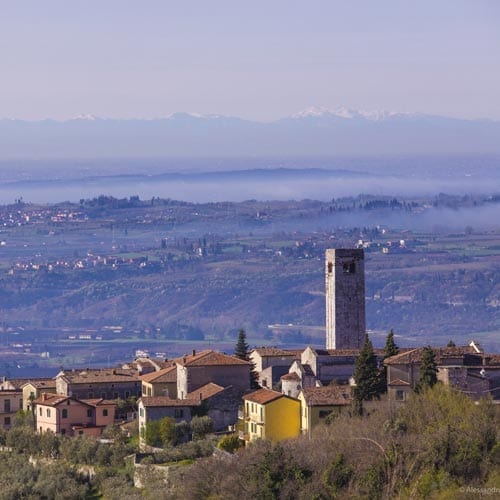 Follina
Follina
MUNICIPALITY OF follina
(Treviso District)
Altitude
mt. 200 a.s.l.
POPULATION
3.880 (600 in the borgo)
TOURIST INFORMATION
IAT FOLLINA in Via Convento, 1
0438970350 – 0438971666
info@ondaverdeviaggi.it
info@prolocofollina.it
Associazione Visit Follina Tel. 335 8061570
info@visitfollina.it
www.turismofollina.it
www.comune.follina.tv.it

The Abbey of Follina was called “Santa Maria della Fulina in Sanavalle” (St Mary of the Fulina in Sanavalle) by the Cistercian monks. The name derives from the wool weaving (“follatura” in Italian).
The borgo is located north of Treviso, at the foothills of the Alps, between the town of Vittorio Veneto and Valdobbiadene, in an area famous for the Conegliano Valdobbiadene Prosecco Superiore Docg wine.
Follina’s centuries-old history began in the XI century with a group of Benedictine monks, to whom the Cistercians succeeded from 1146 (year of foundation of the Abbey of Santa Maria in Sanavalle) to 1448. For more than two years Santa Maria in Sanavalle has been a hub of the Cistercian culture and in its own small way it expanded, building woolen mills and millstones and draining the area between Piave and Livenza. The monastic art, aimed at the creation of beauty, with its arches, capitals and columns and with its light games, has left us masterpieces such as the cloister finished in 1268, the wooden crucifix of the Baroque age and the fresco of 1527 by Francesco da Milano.
Tradition wants that the wool manufacturing was brought to Follina by the monks of the Abbey of Santa Maria. Wool manufacturing was deeply rooted in Follina, as shown by some elegant buildings in the historical center.
Right at the foot of the Abbey stands the Barberis Palace, build by Francesco Fadda, who since 1666 juxtaposed the production of more refined fabrics to that of simple wool clothes.
More recent is the story of the Andretta woolmill, built in 1820, which later became Collegio di San Giuseppe (St Joseph College), first seat of the cultural activities of the municipality and then of the municipality itself.
In 1800,s, only the smallest woolmills were capable to face the market recession, such as the one founded in 1795 by Gaspare Paoletti. Today, Lanifico Paoletti is the only surviving handicraft of a secular tradition, rewarded by fashion brands who use its fabrics for their collections.
At the end of XIX century also silk production underwent a recession and in that time the Serica della Marca was born, in one a unique reality that provides silks, yarns and fabrics to the most prestigious fashion brands. An important driver for the industrial recovery of the area.
Even today, the Abbey is the center of cultural life: in June it hosts the Concerts of Alta Marca, in the wonderful location of ancient Refectory, counting on the presence of the great violinist Uto Ughi, honorary citizen of Follina. According to legend, the Abbeywas built after the finding of the sculpture La Madonna col Bambino (Our lady with the child), today placed in a niche of the main altar. The mysterious sculpture is supposed to date back to the VII century.
The Spiedo (meat skewer) is the classic local dish, served with mushrooms and preceded by a first course made of local herbs.
Follina is part of the network “Primavera del Prosecco”, an important festival promoting the famous Prosecco wine through tasting events and the exhibitions.






